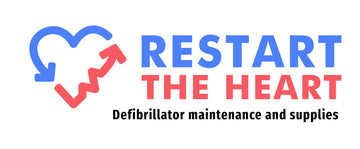What Types of Rhythms Are An AED Capable of Resolving?
The muscles surrounding the heart contract due to electrical impulses, giving the body blood that is rich in oxygen. The right atrium in the heart's upper chambers contains the sinus node, a natural pacemaker controlling the heartbeat.
The heart stops regularly beating when abrupt cardiac arrest occurs. The Automated External Defibrillator or AED can stop the irregular cardiac beat by depolarising the entire heart's electrical circuitry. This enables the heart to resume normal electrical function and fully repolarise.
To completely repolarise the cells, the shock must be strong enough; otherwise, an irregular rhythm can persist.
AED Waveform
During the depolarisation/repolarisation process, the cell's electrical activity switches from positive to negative. As the cardiac muscles repolarise, the sodium channels in the muscle cells close, the potassium ion channels open, and the muscle cells rest.
The sodium channels are opened during depolarisation, stimulating the heart muscles to contract. This supplies the rhythm or waveform that the AED can read and analyse to decide whether or not a shock is required.
The electrical impulse, not the physical movement of the heart, is monitored when an AED analyses the beat.
What Types of Rhythms Are An AED Capable of Resolving?
A defibrillator can treat a variety of cardiac rhythms. The defibrillator comes from ventricular fibrillation, which occurs most frequently and is referred to as V-Fib.
It is known as ventricular fibrillation when the regular heartbeat becomes erratic, brief, and rapid—too brief and rapid to allow enough blood to flow from the ventricles.
Ventricular tachycardia is another common heart rhythm during a cardiac arrest that a defibrillator can treat.
The heart beats at a rate of 100 or more beats per minute or more in ventricular tachycardia (also known as V-tach or VT), and the bottom and upper chambers do not beat in unison.
A widespread misunderstanding is that defibrillators may revive a heart that has fully stopped (also known as "flatlining" or asystole). Once a defibrillator ceases generating electrical activity, it can no longer restore the heart's rhythm.
How Strong Must An AED Be To Function?
The power of a monophasic shock is frequently very high—roughly 360 joules—because the body's cells offer some resistance, or impedance, to the electricity.
The equipment needed to generate and store the necessary electrical energy was enormous and unwieldy. These defibrillators were not meant to be used by lay rescuers or early caregivers, unlike modern AEDs.
But as the technology improved, defibrillators became more effective, user-friendly, and accurate.
Additionally, because the newest AEDs were utilising the same technology as automatic implantable cardioverter-defibrillators, peak current was reached with a shock that was just 100–120 joules in energy.
Biphasic waveform defibrillation is the name for this flow of electricity in both directions. The current moves from one electrode to the next in the first phase. In the second phase, the current returns to the initial electrode.
Biphasic shocks have a much lower current requirement for effective cardiac muscle cell repolarisation. Additionally, the lower current lessens the possibility of incidental injuries like burns at the electrode location.
The creation of the AED was made possible because defibrillators had to be substantially smaller due to the lower current requirements.
Defibrillators could be placed in various locations, including schools, airports, shopping malls, and other places with heavy pedestrian traffic, thanks to their smaller size and reduced cost.
Conclusion
Automatic External Defibrillators (AEDs) have revolutionised how sudden cardiac arrest is treated.
An AED can recognise an abnormal heart rhythm, such as ventricular fibrillation, and deliver a shock to the heart to restore a regular rhythm. This shock helps to restore the normal heart rhythm, allowing the heartbeat to resume its normal function.
The shock delivered by the AED is a lifesaving intervention, and although it is not a cure for the underlying cause of cardiac arrest, it can save the patient's life.
AEDs are an invaluable tool in the fight against sudden cardiac arrest and can be used in various settings, from public places to medical facilities. Therefore, AEDs from an AED supply store are essential to cardiac arrest management and should be available in all public places.
Restart The Heart is an established supplier of defibrillators. All brands of AED pads and batteries are available from us, and we guarantee swift delivery and top-notch customer service. We have defibrillators, pads, batteries, and first aid supplies—everything you could need! Place your order right now online!

